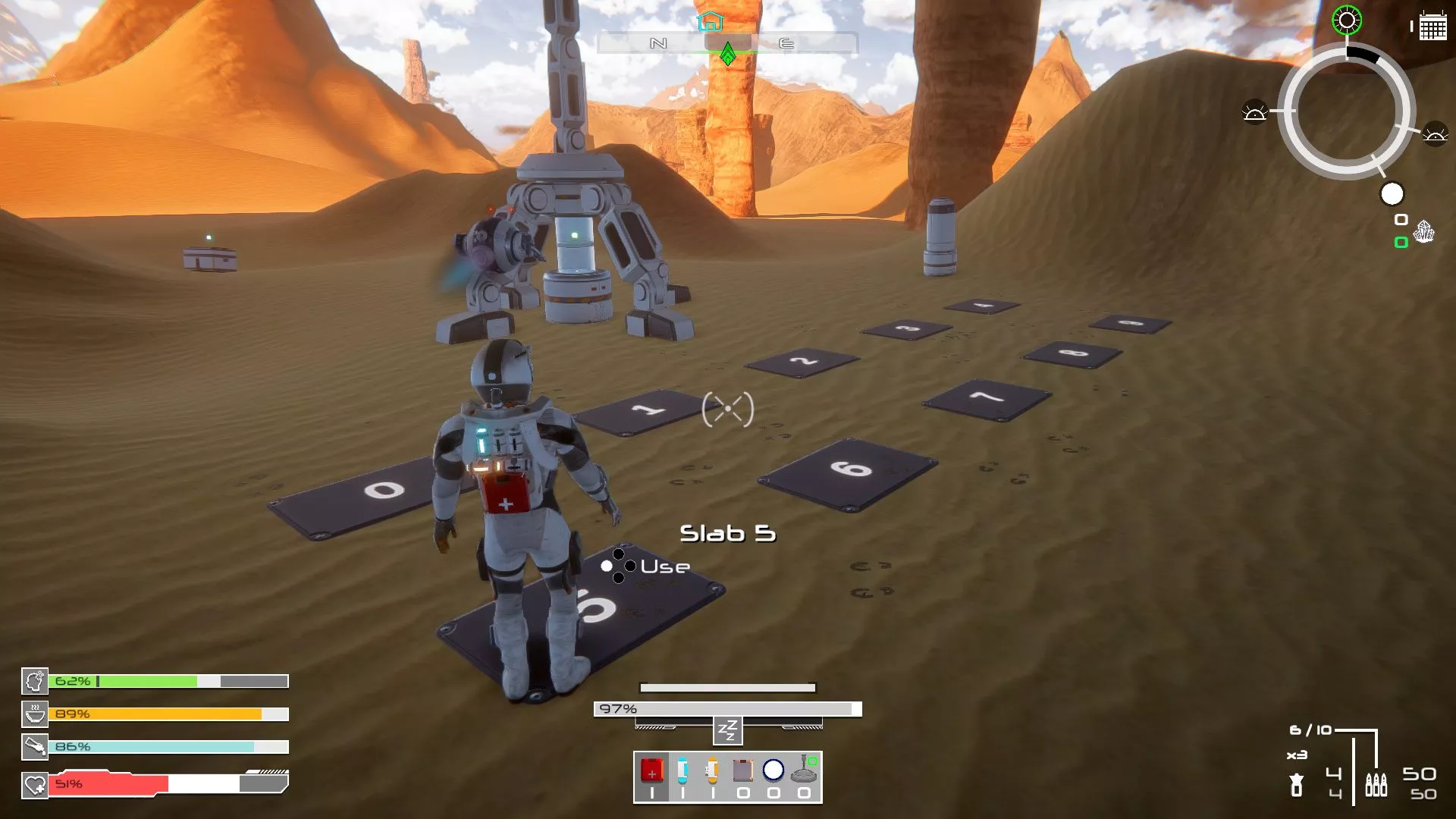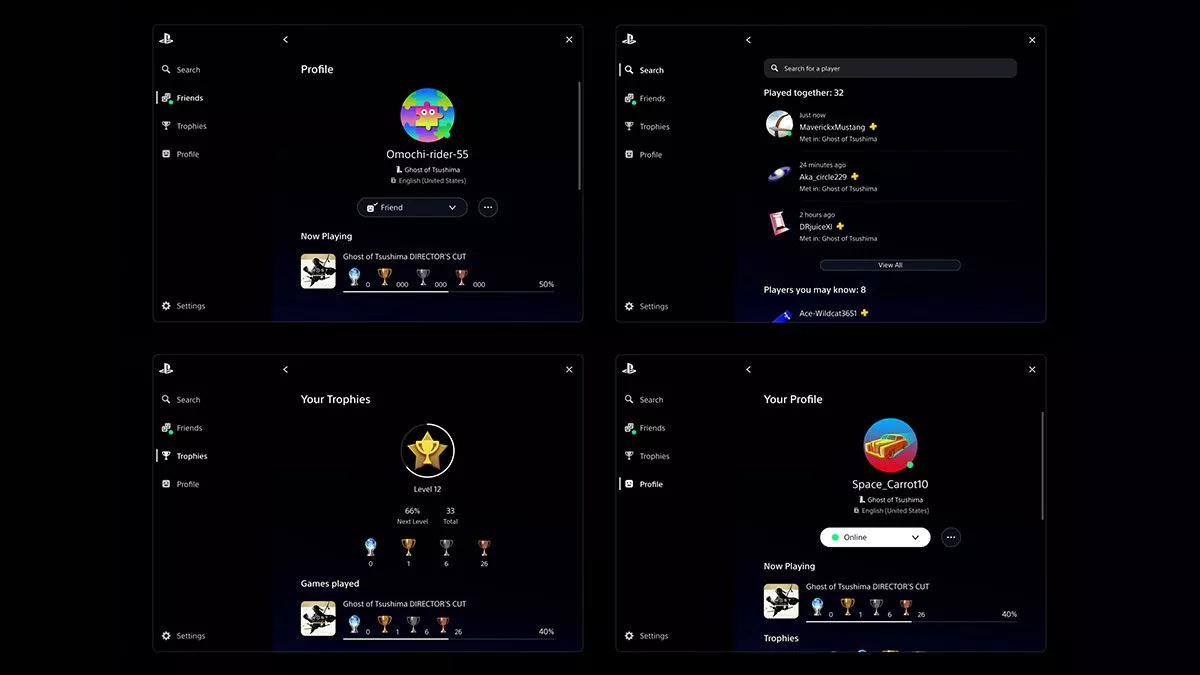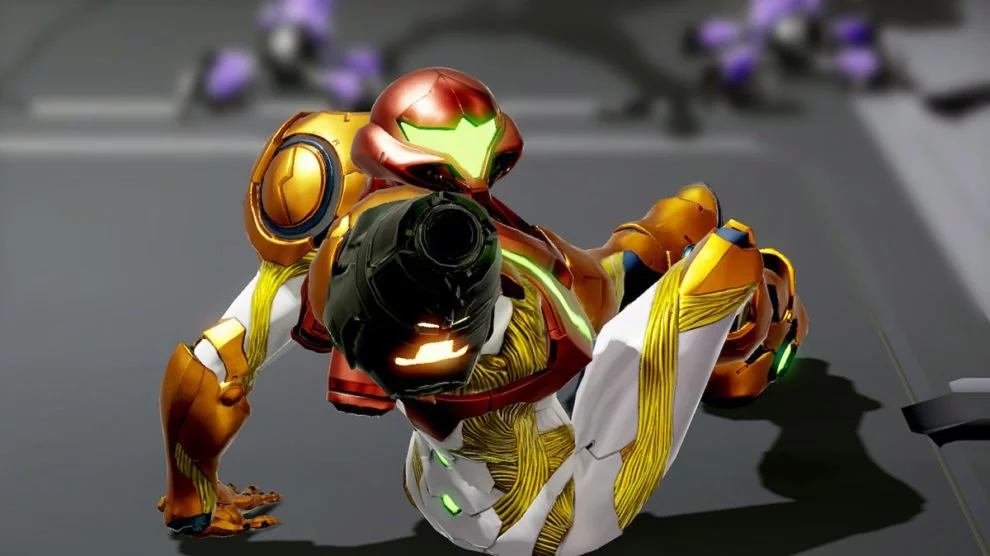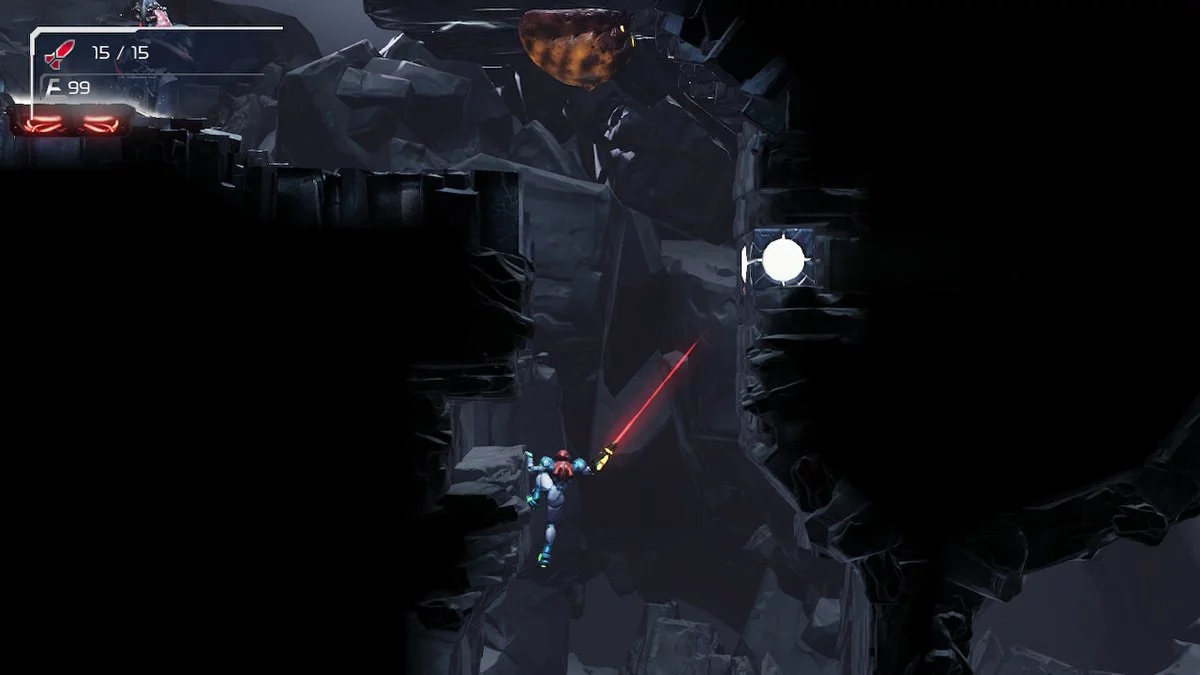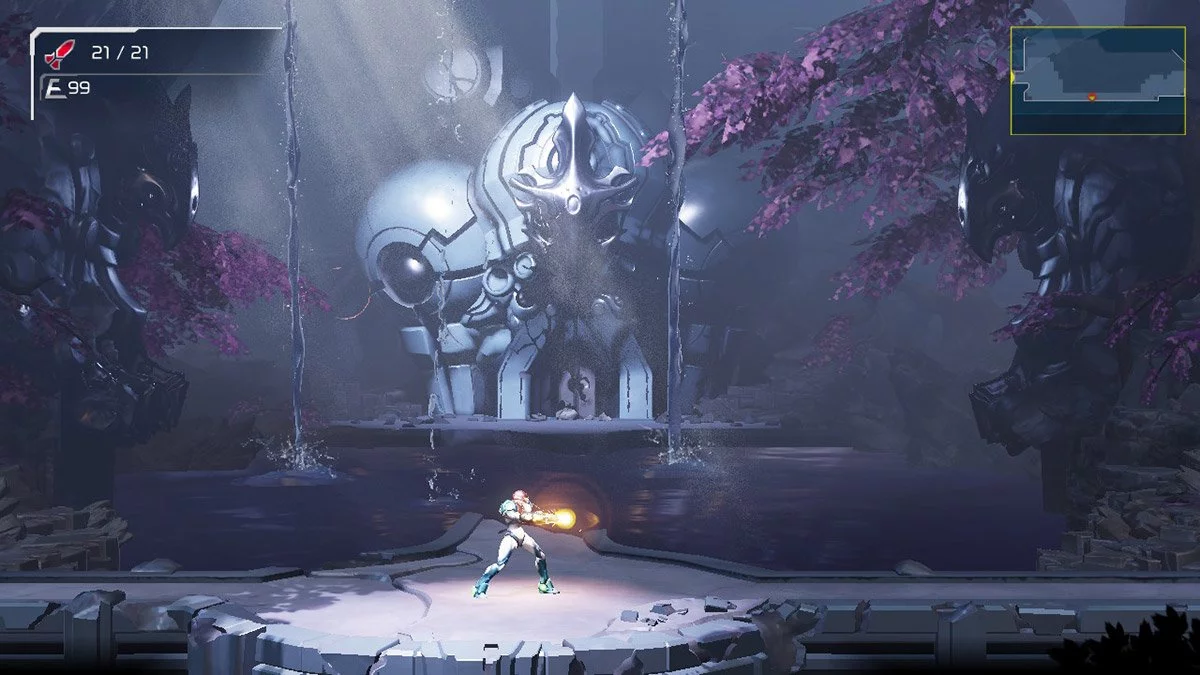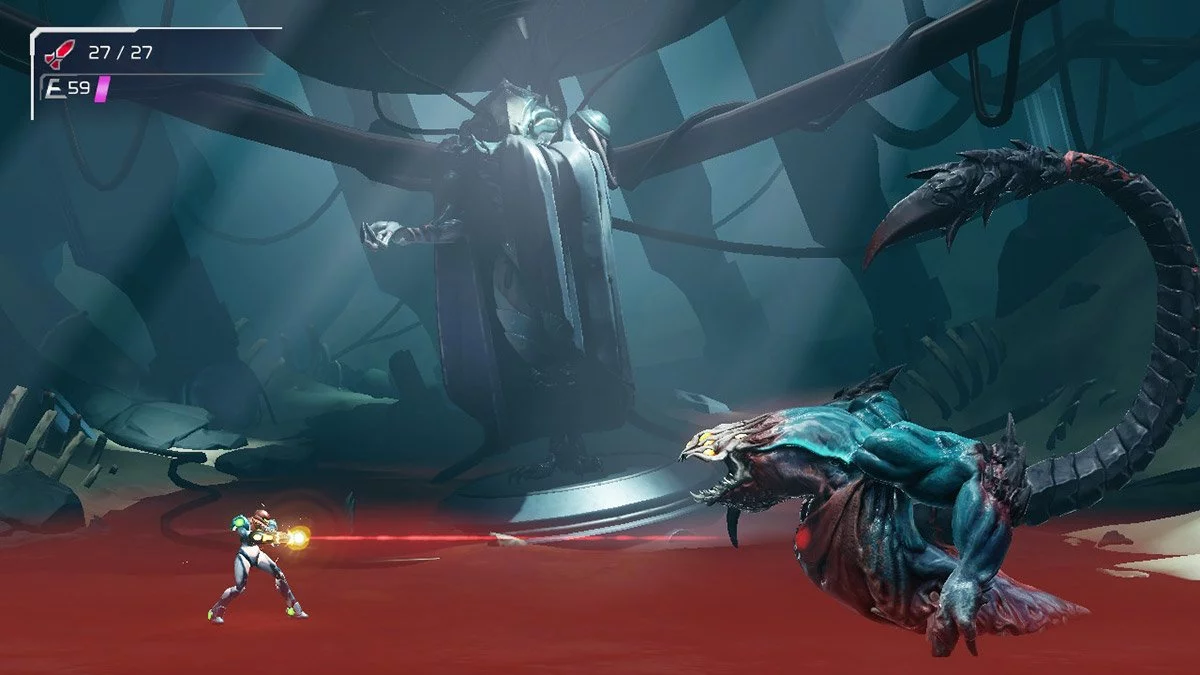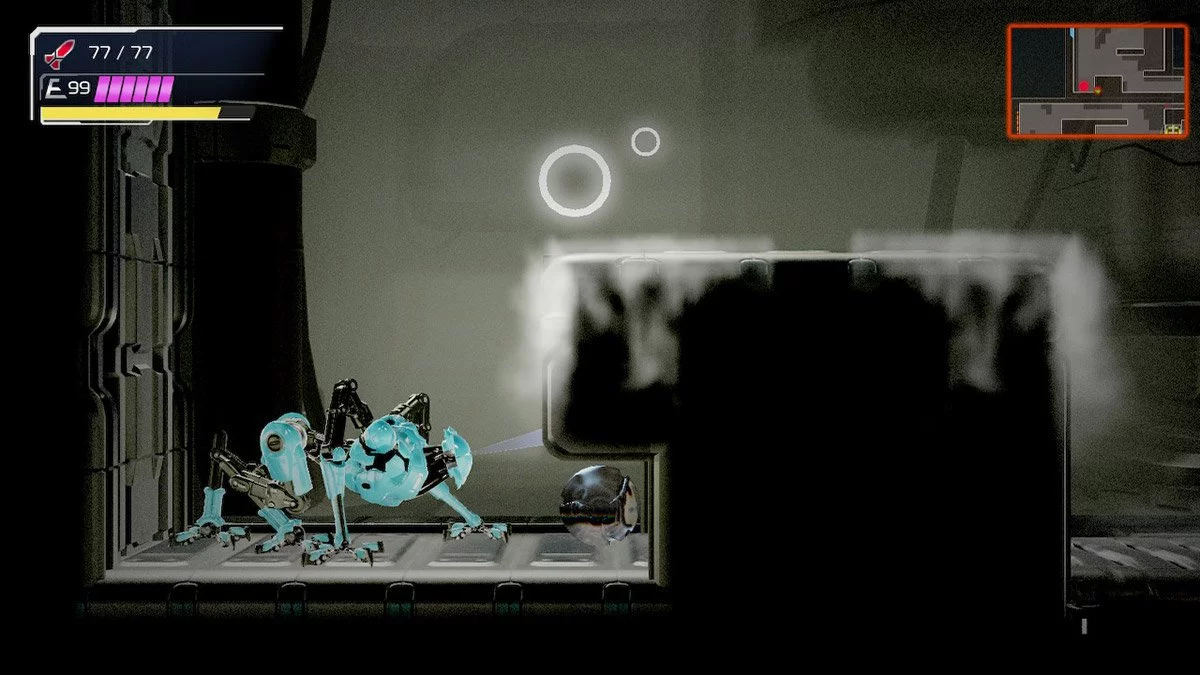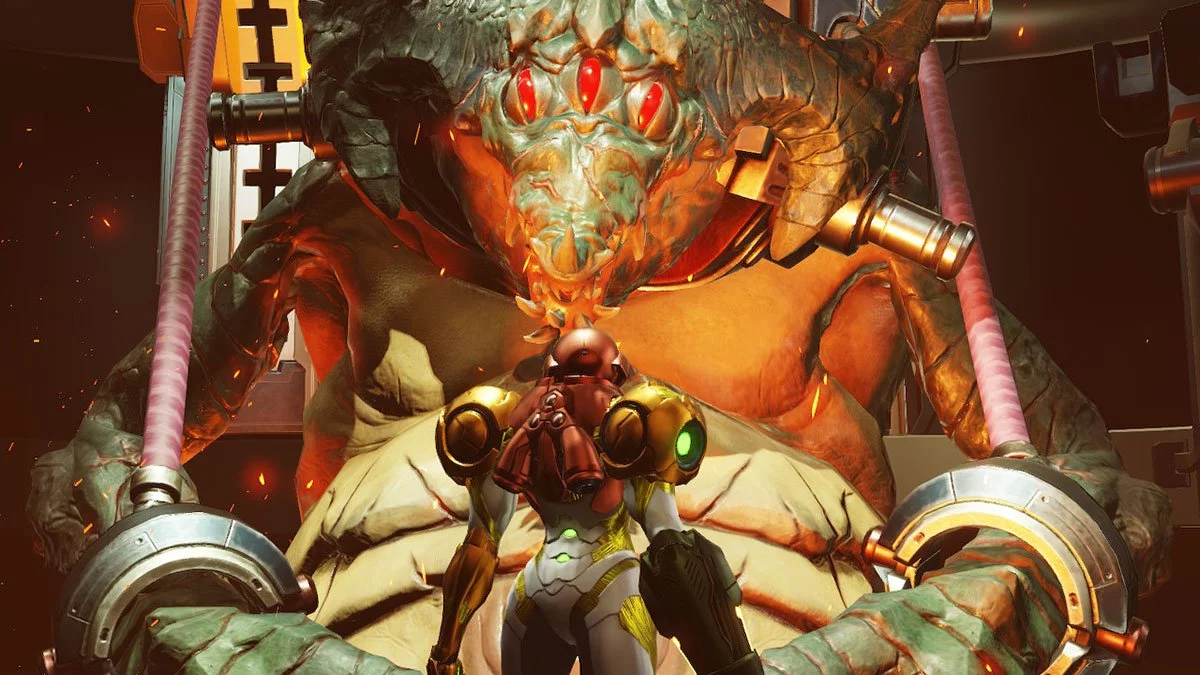After almost two decades, Samus is reborn to conclude the original Metroid saga.
It’s almost surreal that Metroid Dread has finally been released, 19 years after Metroid Fusion, the last original 2D Metroid game. In that time, we’ve had two solid remakes and an entire 3D trilogy. It’s not often that a game teased 15 years ago and then lost to speculation actually come to fruition. I’m glad of all the games that have fallen to a stalled development, Metroid Dread is the success story. It’s more than just a nice surprise that 2021 didn’t see coming – it’s one of the best games of the year, and genuinely revivals the prestigious legacy of Super Metroid for the mantle of best 2D Metroid game.
Nintendo EPD has again partnered with developer MercurySteam, who brought us the revival of Metroid with the well-received remake of Metroid II in Samus Returns on 3DS in 2017. It was a deserved and much needed remake – I would suggest playing that and the GBA remake of the original game, Metroid Zero Mission, over the NES and GB originals – and importantly served as a successful proof of concept.
At the time, it was somewhat overlooked, as the Switch had been out for months, and it was hard to go back to the pixelated 3DS so soon after being treated to HD handheld gaming. Nintendo was clearly keen to see more, and in collaboration, MercurySteam has been given more freedom to explore the Dread concept originally conceived for the DS to create the first high definition Metroid game.
The modernised Metroid gameplay introduced in Samus Returns provides the foundations. Where the controls were confined by the limitations of the 3DS’s circle pad, it handles like a dream on Switch, with Joy-Cons or a Pro Controller. Samus can aim diagonally, as well as up and down while moving, and holding the L button continues to engage a precision aim mode at the expense of movement. The melee counter returns, but aside from some select moments where it’s the only option, I found more success firing and evading, rather than countering.
Samus is far nimbler and much faster than we’ve seen her in past games, including Samus Returns. She’s running most of the time, bounces off the walls at serious pace and takes things to another level with the introduction of a slide mechanic, which is one of the few abilities that doesn’t desert her.
Side-scrolling games are normally streamlined with preferred tactical nous, but the more I powered-up Samus’ gear, the more I realised direct combat is only one option. Samus begins with speed, but as she becomes more capable and the enemies become tougher, you’ll learn to spot alternate routes and slip past enemies with fluidity. This is the best Samus has ever handled, and it’s not just about being quick, it’s also about being agile, as stealth and evasion blend perfectly with speed and action – this game is going to be a speed-runner’s delight.
Dread faithfully follows the Metroid checklist, stripping Samus of almost all her abilities and scattering them around the world to open new pathways and combat possibilities. You are almost inundated with power-ups, so frequently they are discovered, but most stack on top its predecessor so you needn’t think too much about how to engage each one in combat.
Firing with Y will use a combination of whatever beam unlocks have been recovered, so there’s no need to switch between ammo types – simply spam fire or choose to charge a more powerful shot. The only critical combat modifier is holding down R to equip missiles, which again stack, so you don’t need to worry about using super or ice missiles – it all happens at once, again with the exclusion of a charge shot.
There is a place in the 3D Prime series to split up these variations, but in a fast-paced 2D scenario, Metroid Dread does a great job of keeping its long list of upgrades as simple to use as possible. There is an initial learning curve, especially balancing the bounty hunter’s rapid movement with the fixed position of precision aiming, but once you’ve got the hang of it, Dread never changes anything on you. It manages to continuously introduce more mechanics, many of which are never front of mind, without requiring you learn how to use them, as most automatically integrate into the established state of play.
Dread follows the direction of its predecessor, Fusion, in that there is normally a right way to go. Considering that game is almost two decades old that might mean little, so think Ori and the Will of the Wisps in terms of structure. There is plenty of backtracking, but the regular stream of new abilities funnel Samus in the right direction. Don’t get me wrong, there is no handholding here and you’ll need to think to find the path forward. But every time I got lost and found myself exploring far and wide, it was usually because I missed something much closer to where I unwittingly veered off course. There are some strategic transport and teleport options to transit Samus across the world, so for the most part, the regular revisiting doesn’t interrupt the flow of progress.
While it’s set on a new planet, the varied levels encompass everything we have come to associate with the world of Metroid. Each area has its distinct theme, ranging from some quite dark and grey caverns to vibrant forests and the customary hot and cold landscapes. The level design on the whole is exquisite. It allows Samus to traverse the maze of maps at speed, while still needing to consult the map and consciously plot a path to her next objective – there are no waypoints here.
The only negative to the otherwise excellent design is the over-reliance on hidden blocks that require different abilities to destroy; to the degree that the tutorial warns you about this and suggests shooting wildly if you get stuck. Eventually an item helps you find the weak points, but it’s the one element that’s overplayed in otherwise excellent level design.
Metroid Dread has launched alongside the Switch OLED and presents an immersive atmosphere on the updated handheld, with a unique blend of dark and dingy environments contrasted with bursts of striking colours – it looks stunning on the 7” OLED screen. Movements are fluid and the animations are excellent in motion, with only the odd hint of slowdown when the action gets a little too hectic. It’s brought together with familiar sounds and immersive cutscenes that develop a moody, mysterious and distinctly Metroid atmosphere. While it really pops and looks fantastic as a handheld game on the Switch OLED, there are a few rough edges when it’s blown up to TV size as a console game, where it’s missing the final layer of AAA visual polish. I had flashbacks to playing Fusion on the GameCube’s Game Boy Player – a great way to play, but I prefer it on the smaller screen.
Quick recap: Serving as a conclusion to the five-part primary arc, Dread opens after Samus has really stuck it to the deadly X parasites by destroying planet SR388 in Fusion. After being infected by the X, she was infused with the DNA of a deceased baby Metroid to save her life – at this point, Samus is part Metroid, which gives her their strengths and weaknesses. Jump ahead, and the Galactic Federation responds to a report that the X parasite lives by dispatching a squad of fit-for-purpose E.M.M.I robots to planet ZDR to investigate. When contact is lost, it’s up to Samus to follow, where she soon learns there is another twist in this tale. But before she’s able to unearth any answers, our lone hunter discovers the E.M.M.I have turned, and these killer robots are now hellbent on her destruction.
Metroid is far more complicated than its brief text-based narrative would suggest, but Dread is the best in the series at keeping you in the loop. It uses Samus’ ships computer, named Adam, to provide regular status updates, as well as a few choice encounters to explain the unusual turn of events. It’s all fully voiced acted for the first time, though Samus remains fairly quiet. While it would enhance the experience, you don’t need to have played Metroid 1-4 to follow Samus’ troubles in Dread; the biggest of which being her regular encounters with the E.M.M.I.
The E.M.M.I bring the dread. They are a small fleet of deadly robots that Samus can’t harm until the moment is right, as the only weapon powerful enough to disable them, the Omega Cannon, is offline most of the time. If they find her, it’s almost certainly instant death, unless you can slip away and hide or get lucky with a counter that the game predicts has a 1% success rate. I found it was closer to 10%, but even so, a direct confrontation with an E.M.M.I normally spells demise.
At first, I though these were going to play out like Mr X in Resident Evil 2, but thankfully the E.M.M.I are contained within specific areas, which limits the bouts of dread. Each of the colour-coded robots have different abilities, so while the first fully functional encounter is tense, you survive knowing that each subsequent model has more challenging abilities. These moments are genuinely tense, but thankfully, you’ll checkpoint outside the nearest safe zone, so death spells inconvenience more than disaster. They’re also infrequent enough not to become overbearing, whilst still being the headline act of Metroid Dread, and it’s reassuring to know at some point each E.M.M.I will be defeated, allowing you to explore those corridors at ease.
The E.M.M.I bring the tension, but it’s the legion of bosses, mini-bosses and super-powered enemies that bring the real challenge to Metroid Dread. These overpowered, and often oversized, foes come thick and fast and achieve a rare feat: while many of them wiped the floor with me initially, I was scarcely frustrated. Sure, there is the odd annoying encounter, as is to be expected with such a bustling roster of bosses and minions. But on the whole, I really appreciate the boss design in Metroid Dread, despite the constant death it brought upon me.
Several encounters annihilated Samus within seconds; but I quickly learned from those experiences. With each attempt, I understood another of the boss’s moves and how to evade or counter them. Whereas similar games would corner me into a rage quit, with each defeat at the hand of the more challenge bosses, I could see myself growing and improving; it drove me to continue and do better. I never expected to be victorious upon the maiden attempt, and I often went from seemingly no hope to triumphant joy within minutes. Despite the odd outlier, the regular boss encounters in Metroid Dread are top notch – they strike a fine balance between genuine challenge and promoting the player’s rapid improvement, to test your abilities without bogging you down.
Metroid Dread has been decades in the making, and if that’s because it wasn’t possible on less powerful handhelds, it’s been well and truly worth the wait. The strong foundations of Samus Returns have been expanded upon and evolved to create a modern Metroid experience that meets, and surpasses, the classic expectations. While it’s not a horror game, the E.M.M.I provide tension without being overplayed, and are backed up by a selection of challenging but rewarding boss battles. Playing as Samus has never felt better, with the bounty hunter’s quick and nimble movement perfectly paired with a blend of action, speedy traversal and stealth.
Metroid is back – now please don’t make us wait another two decades for the next original 2D entry.
 |
|
The good
|
The bad
|
Metroid Dread was reviewed using a promotional code on Nintendo Switch, as provided by the publisher. Click here to learn more about Stevivor’s scoring scale.
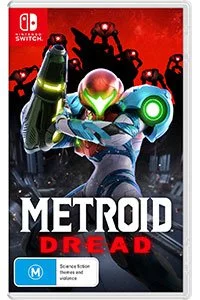 |
Metroid Dread8 October 2021Switch |
This article may contain affiliate links, meaning we could earn a small commission if you click-through and make a purchase. Stevivor is an independent outlet and our journalism is in no way influenced by any advertiser or commercial initiative.


